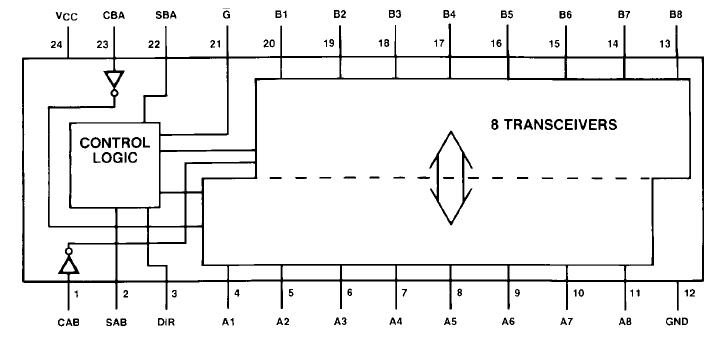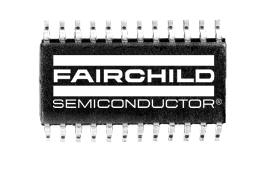Number of Channels per Chip
: 8
Output Type
: 3-State
Low Level Output Current
: 48 mA
Maximum Operating Temperature
: + 70 C
Package / Case
: SOIC-24
Packaging
: Tube
Supply Voltage - Max
: 5.5 V
Supply Voltage - Min
: 4.5 V
Logic Type
: Bipolar
Input Level
: TTL
Output Level
: TTL
High Level Output Current
: - 15 mA
Propagation Delay Time
: 9 ns
Logic Family
: 74AS
Features: · Switching specifications at 50 pF
· Switching specifications guaranteed over full temperature
and VCC range
· Advanced oxide-isolated, ion-implanted Schottky TTL process
· 3-STATE buffer-type outputs drive bus lines directly
· Guaranteed performance over industrial temperature
range (-40°C to +85°C) in 64-grade productsPinout SpecificationsSupply Voltage ...........................................................7V
SpecificationsSupply Voltage ...........................................................7V
Input Voltage
Control Inputs ............................................................7V
I/O Ports ..................................................................5.5V
Operating Free Air Temperature Range..... 0°C to +70°C
Storage Temperature Range ................-65°C to +150°C
Typical qJA
N Package ........................................................41.1°C/W
M Package ........................................................81.5°C/W
Note 3: The "Absolute Maximum Ratings" are those values beyond which
the safety of the device cannot be guaranteed. The device should not be
operated at these limits. The parametric values defined in the Electrical
Characteristics tables are not guaranteed at the absolute maximum ratings.
The "Recommended Operating Conditions" table will define the conditions
for actual device operation DescriptionThe DM74AS652WM incorporate an octal transceiver and an octal D-type register configured to enable transmission of data from bus to bus or internal register to bus. The DM74AS651 offers 64-Industrial grade product guaranteeing performance from -40°C to +85°C.
These bus transceivers of DM74AS652WM feature totem-pole 3-STATE outputs designed specifically for driving highly-capacitive or relatively low-impedance loads. The high-impedance state and increased high-logic-level drive provide these devices with the capability of being connected directly to and driving the bus lines in a bus-organized system without need for interface or pull-up components. They are particularly attractive for implementing buffer registers, I/O ports, bidirectional bus drivers, and working registers.
The registers in the DM74AS651 and DM74AS652 are edge-triggered D-type flip-flops. On the positive transition of the clock (CAB or CBA), the input data is stored.
The SAB and SBA control pins of DM74AS652WM are provided to select whether real-time data or stored data is transferred. A LOW input level selects real-time data and a HIGH level selects stored data. The select controls have a "make before break" configuration to eliminate a glitch which would normally occur in a typical multiplexer during the transition between stored and real-time data.
The Enable (GAB and GBA) control pins provide four modes of operation; real-time data transfer from bus A-to- B, real-time data transfer from bus B-to-A, real-time bus A and/or B data transfer to internal storage, or internal stored data transfer to bus A and/or B.

 DM74AS652WM Data Sheet
DM74AS652WM Data Sheet








